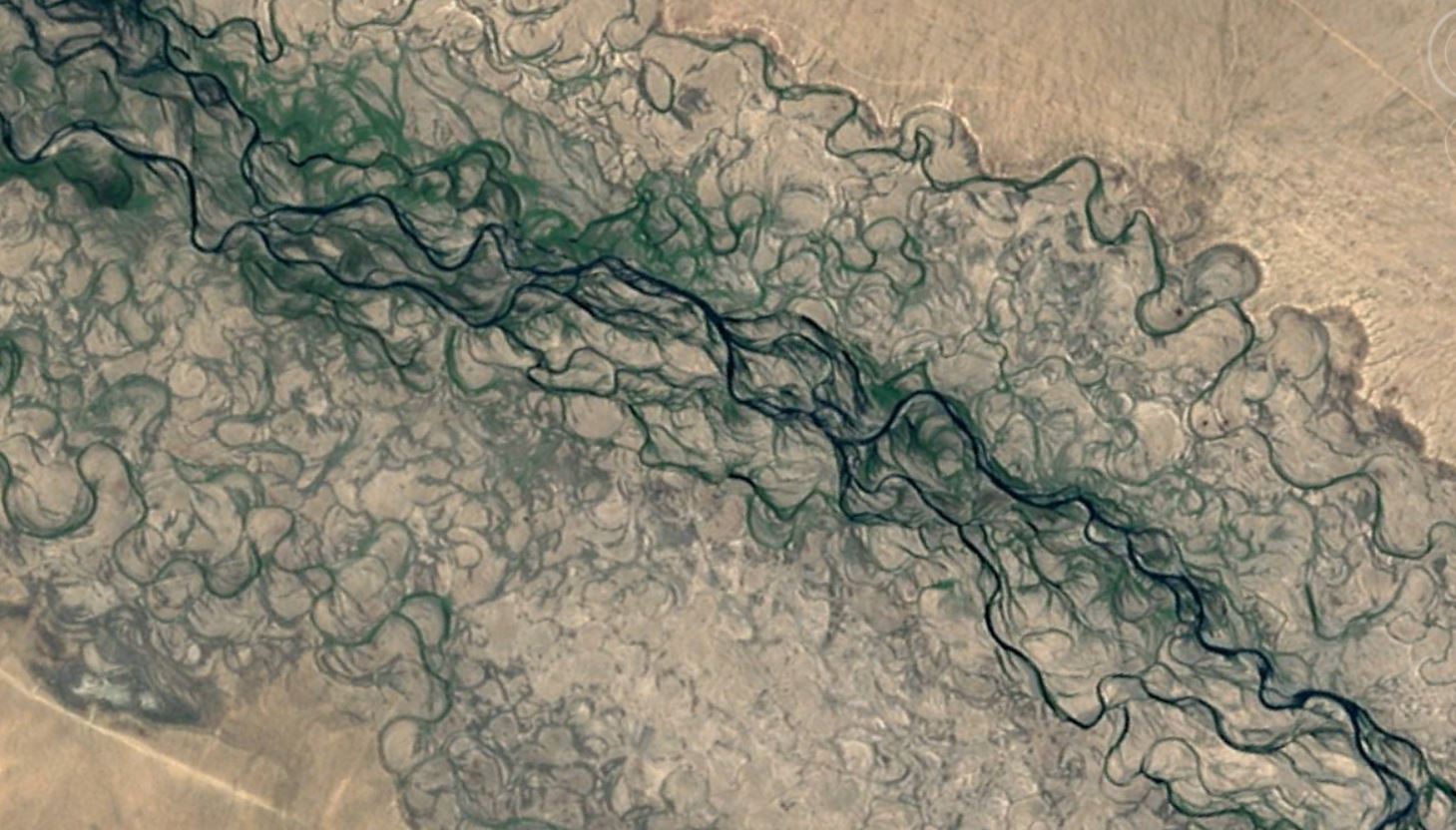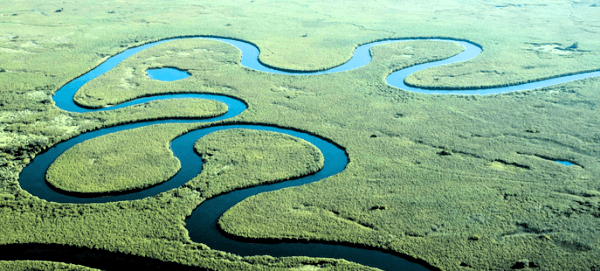
As part of the Rock and Sky Hydrology and Fluvial Geomorphology Course, which we hope to launch shortly, is the section on meanders and their migration downstream, and how they form river cliffs, point bars, oxbow lakes and the so on. However, some of the text books are a little light on the mechanisms. I referred to Arthur Holme’s Principles of Physical Geology, where he devotes an inordinate amount of space to the mechanics and formation of meanders and the work they do in modifying the landscape.
He ventures down the road of physics
Ten pages of small print. I have an immense amount of respect for Holmes – he was writing in the 1960s and much of what he says still holds true. He ventures down the road of physics and the behaviour of media as they interact with one another, and the development of wave-like forms. He also looks at the effect of discharge, load, width, depth, velocity, slope and roughness – all interrelated variables.
There is still some uncertainty on how meanders develop
The one thing that struck me most was how complex the whole process is, and it would seem that there is still some uncertainty with regard to how meanders develop, with competing theories of Stochastic, Equilibrium and Geomorphic and Morphotectonic theory. All of these have good supporting evidence. And certainly, the underlying geology plays a huge role when it comes to the development of geomorphological features. I often rail against the lack of understanding of geological control – too often the theories assume an isotropic medium in which landscapes form. But that is another story.

Returning to the formation of meanders, I spent some time with a Wikipedia article on the topic. Transporting myself back 30 years, I used to shy away from anything that was mathematical or invoked physics – it was all just too much to get my head around. However things changed drastically later in life when I signed up for an M.Sc. in Engineering Geology. I found myself wrestling with all sorts of equations and abstract concepts, including fluid flow, stress, strain, brittle failure of rock, and so on.
There are others who also shy away from the quantitative approach
Having been through that mill, I came out with a greater appreciation of quantitative rather than qualitative explanations of physical phenomena. However, I get the impression from all the text books and many of the articles on this topic that there are others who also shy away from the quantitative approach, which is why I wasn’t getting a real sense of the physical processes that were driving meander formation. Holmes devoted 10 pages of fine text to this subject, whilst the modern text books devote just ten lines.

Diving back into the Wikipedia article, I found discussions on how helicoidal flow develops in a river channel, and how important this is to meander formation. Bernoulli’s equation is invoked to understand pressure differentials between the outer, undercut bank and the inside bend and how water is driven from the high-pressure zone towards the low-pressure zone assisted by boundary-layer effects on the channel floor, which leads to reverse flow towards the point bar. Centrifugal force drives the current towards the undercut bank in the upper stream flow. The downstream momentum of the river draws out this cyclical, cross channel flow into a corkscrew pattern, or as the text books call it, helicoidal flow.
So, having wrestled a little with this, I now had a much greater understanding of how it all works, and I am including some simple diagrams explaining it all in our Hydrology and Fluvial Geomorphology course. So watch this space. If you want to be informed on when we launch the course, please leave your name and email address so that we can keep you posted on updates.
Sign up to stay informed when we launch our Hydrology and Fluvial Geomorphology Course
A promise - no spam, no nonsense, no passing on of your details
If this resonates with you and you think it may be valuable to others, please share.

